CNC Machining Fridays!
We’re back at it again! Every Friday from 3-5pm come join us in the Makerspace Engineering Center in Small Hall to learn, practice, and talk about milling, routing, and lathes!
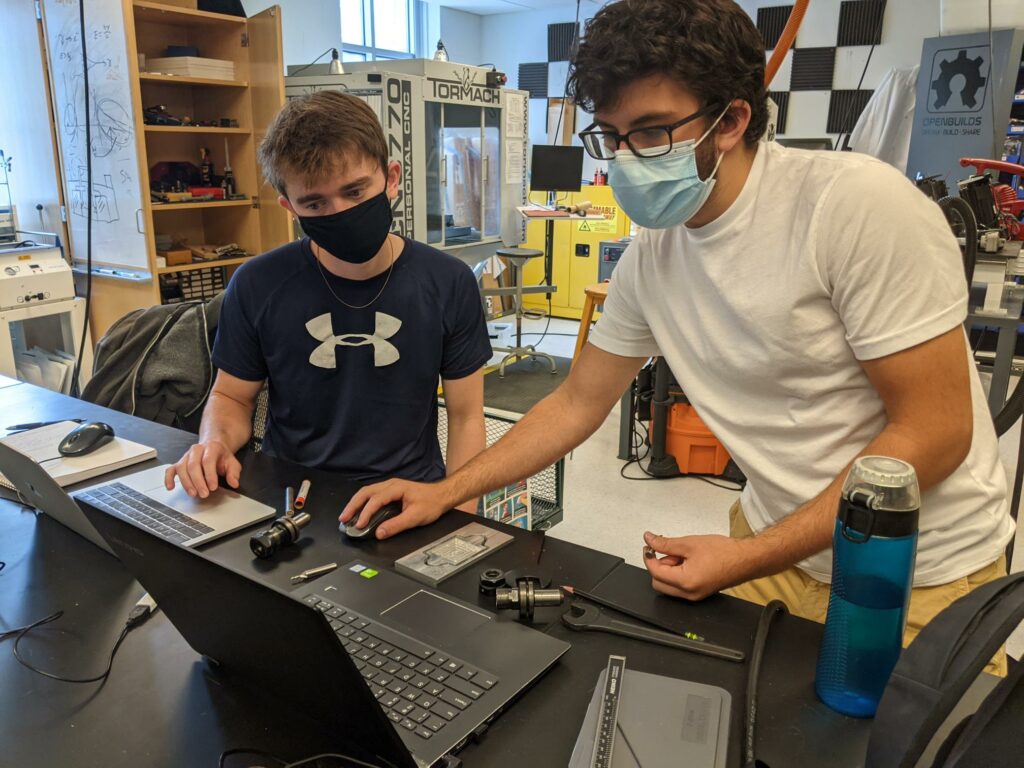
We’re back at it again! Every Friday from 3-5pm come join us in the Makerspace Engineering Center in Small Hall to learn, practice, and talk about milling, routing, and lathes!

We’ve relocated the sewing equipment that was stashed in the Swem Makerspace to the Small Hall Makerspace Engineering Center for the summer. Come on over and lets make something! 😀
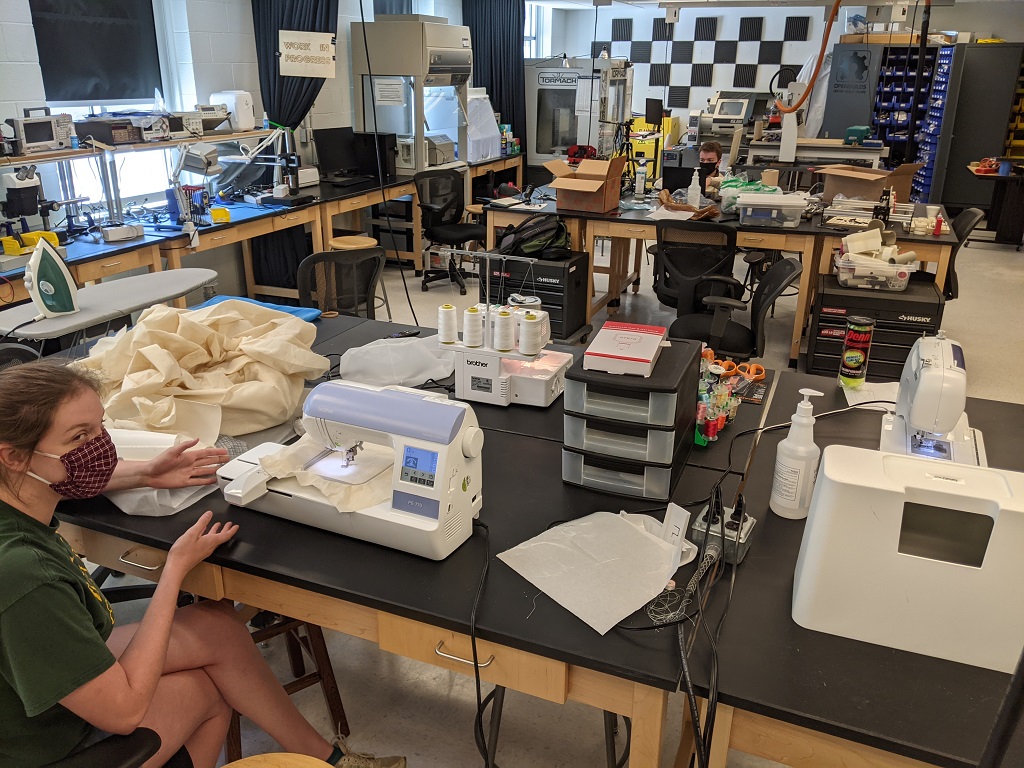
We’re here (albeit at very limited capacity) and are training, learning and building things! Our standard (walk-in) hours are 1-3pm, M-F, in Small Hall 224 (Makerspace Engineering & Applied Design Lab). We’re also ready to help you at most other times, put in a request through our online service desk and we’ll figure out what works for everyone!
Here we are going over toolpath generation & CNC machining!
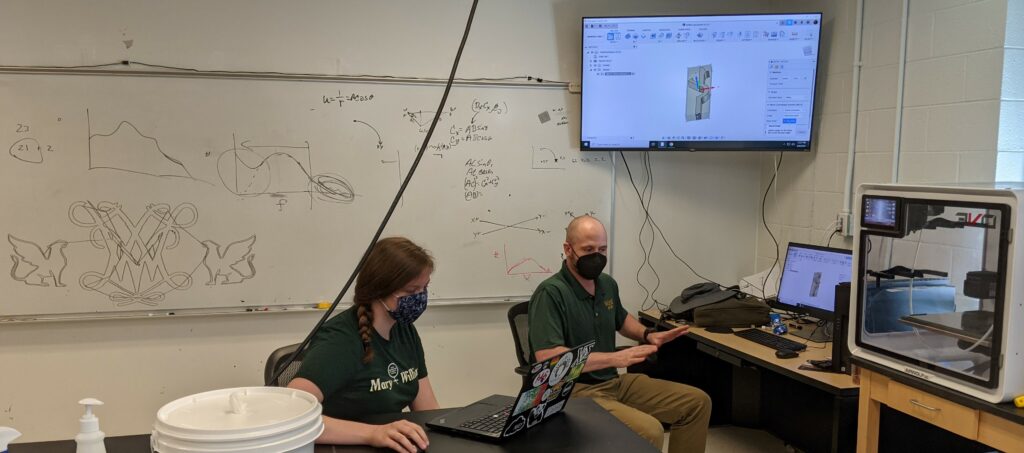
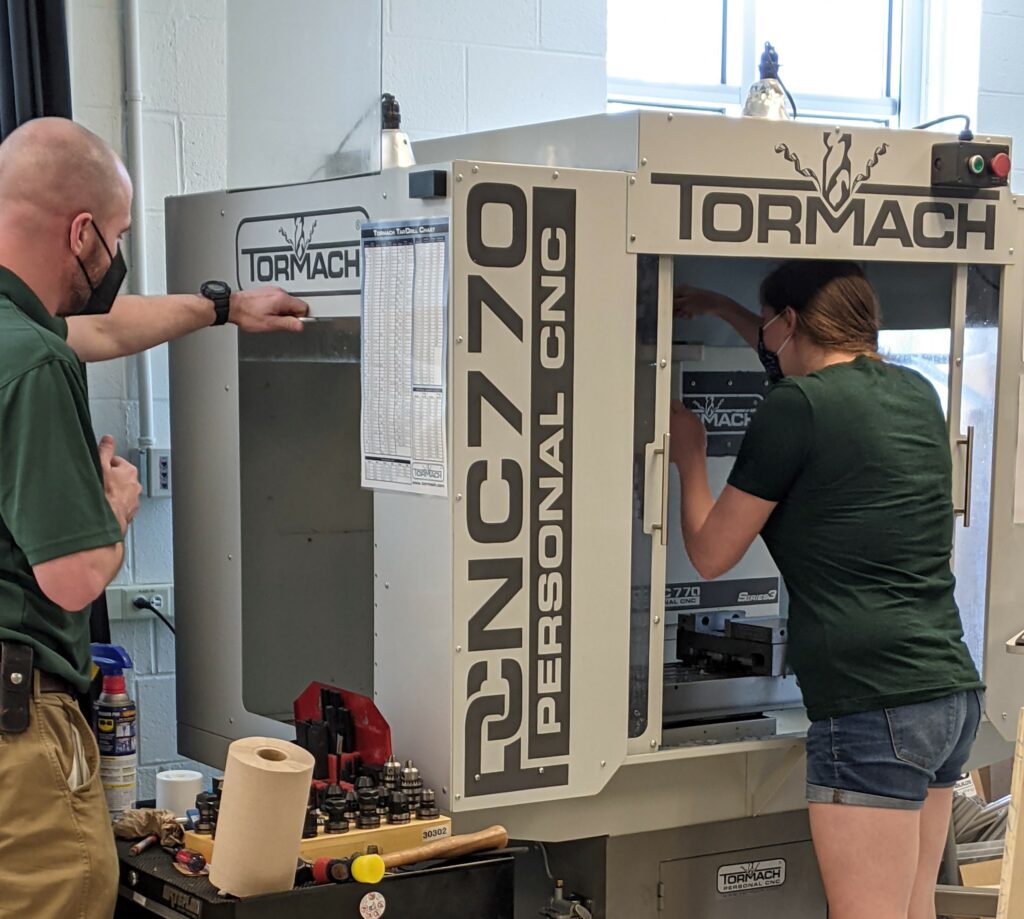
One of our great makerspace student engineers just finished building this uke from plywood and 3D printed bits using the Laguna CNC router and Airwolf 3D Evo printers; check it out!
We put together a simple 2-wire CNC robot in the Small Hall Makerspace Center that draws on the whiteboard! This is version 0.2; future versions will have pen retract among other features. This project will be added to the open source projects listing soon.
Want to intern at the Port of Virginia? They’ve got gigantic robotic gantry cranes! Check this out:
https://workforcenow.adp.com/mascsr/default/mdf/recruitment/recruitment.html?cid=1a28f084-a840-489f-a837-e68fd3bb5078&ccId=1215116661_159&jobId=400991&lang=en_US&source=CC4
Here in the Makerspaces, another project that’s in process is the creation of a robotic boat, or more specifically, the creation of swarming autonomous boats (unmanned surface vehicles (USVs) if we’re being real shoes-and-tie fancy like). As both a platform for learning as well as for research; autonomous unmanned surface vehicles are a very relevant technical environment within which our students are working. Swarming USVs will have deep applications in the future ranging from shipping and transportation to deep water exploration and more.
Starting small, our students are focusing on wholly 3D printed USV swarm member prototypes as shown below as we were preparing for a test launch from our Lake Matoaka docks back in January.
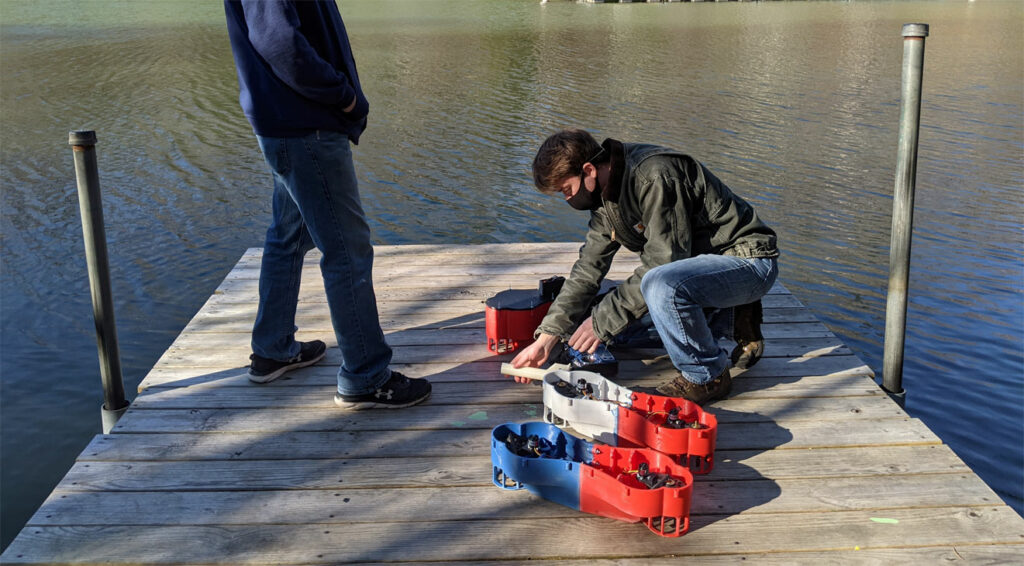
Over the past many months the students involved, in particular the Robotics Club, has explored hull design options and coding architectures on our way towards building an effective swarming USV member.

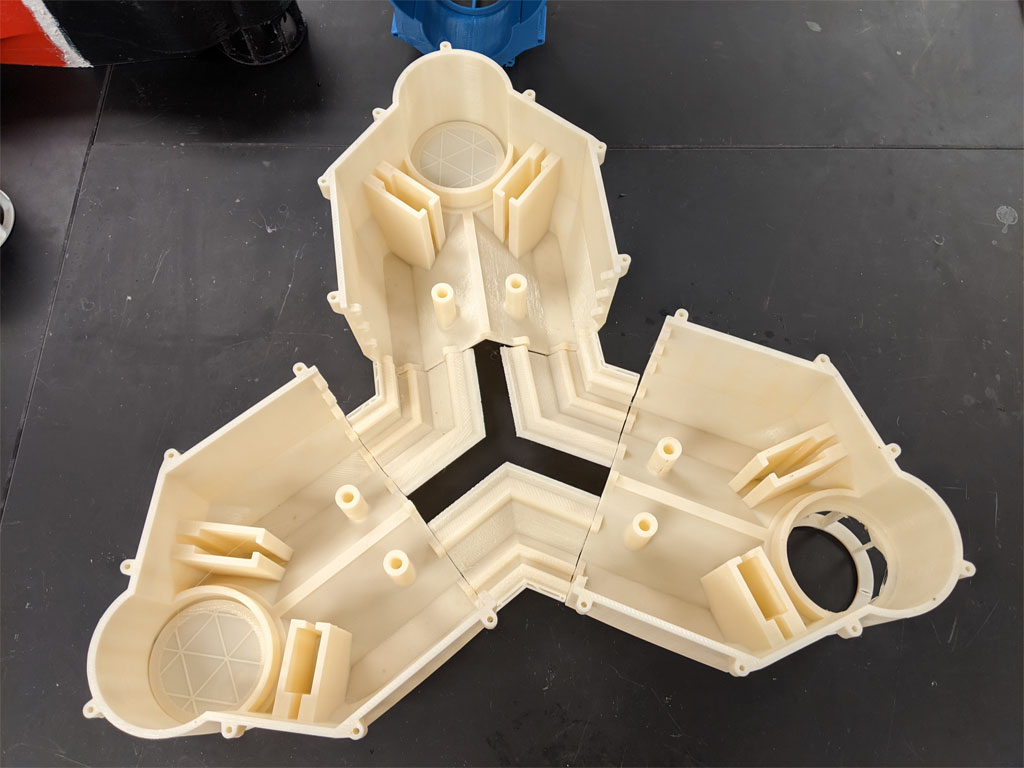
As can be seen these are clearly non-traditional boat hull designs. One of the big reasons that are so strange is that these USVs are based around a unique form of engine, Voith-Schneider propulsion (VSP) systems. VSP systems are quite unique in that they can almost instantaneously point a thrust vector in any cardinal direction. They look and operate similar to a helicopter blade that has been turned vertically and dunked into the water.
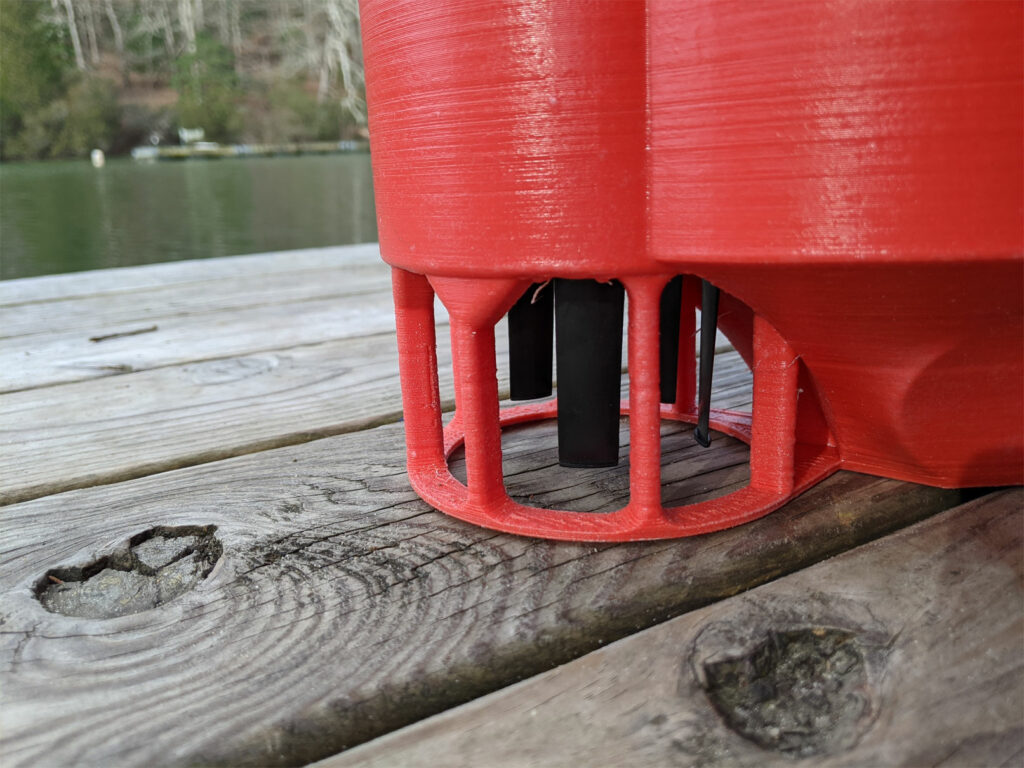
If this project sounds of interest to you, let the Makerspaces or the student Robotics Club know and come join the fun. We’ve got all the basic building blocks working and are heading to the Lake for testing.
What’s better than robotics at Lake Matoaka on a nice sunny day?!
Rain or shine, pandemic or not, the Makerspaces at William & Mary are open and ready to help support you on your journey to create that next project, assignment, or personal learning adventure. Although we’re slightly more limited due to spacing and social distancing requirements, there’s still a whole lot going on around campus. In the past week we’ve had Tribe members come in to learn how to operate a LASER processing system, a CNC embroidery system, CNC lathe, and much more! We’re excited and here to help, so come on in.

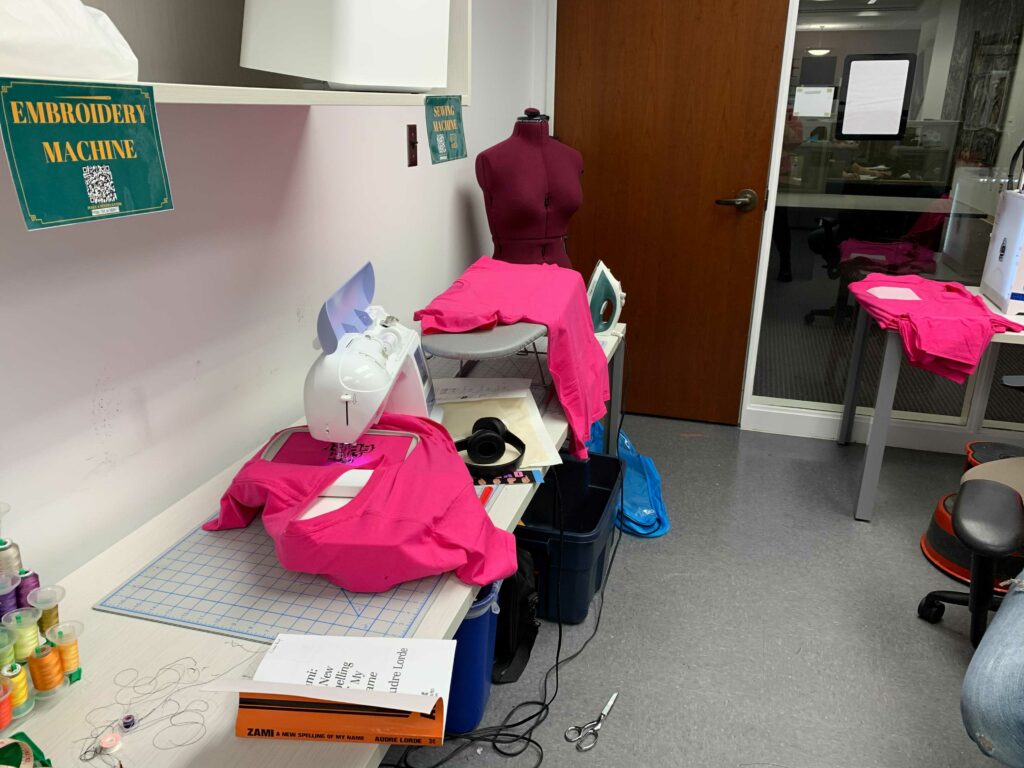
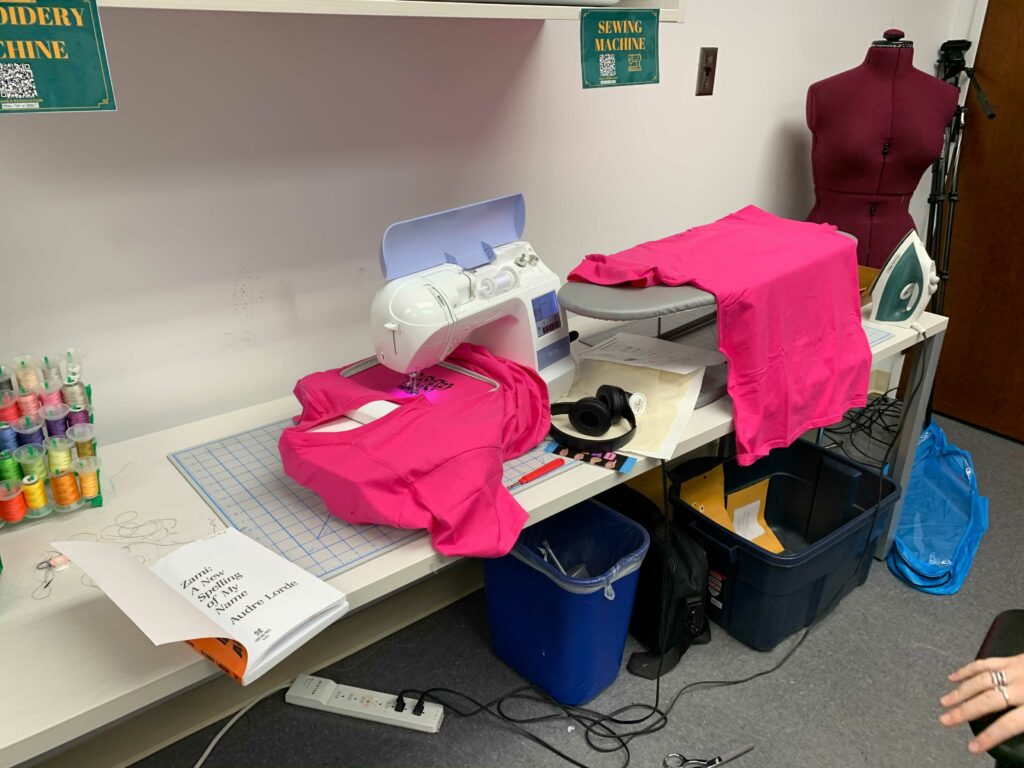
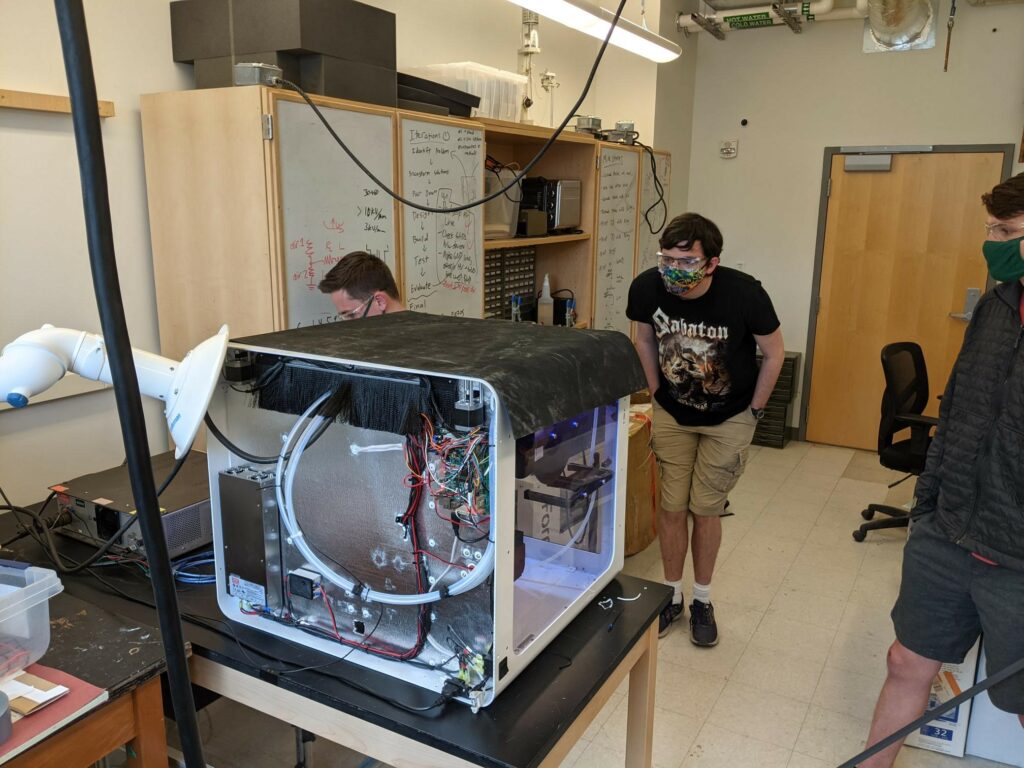
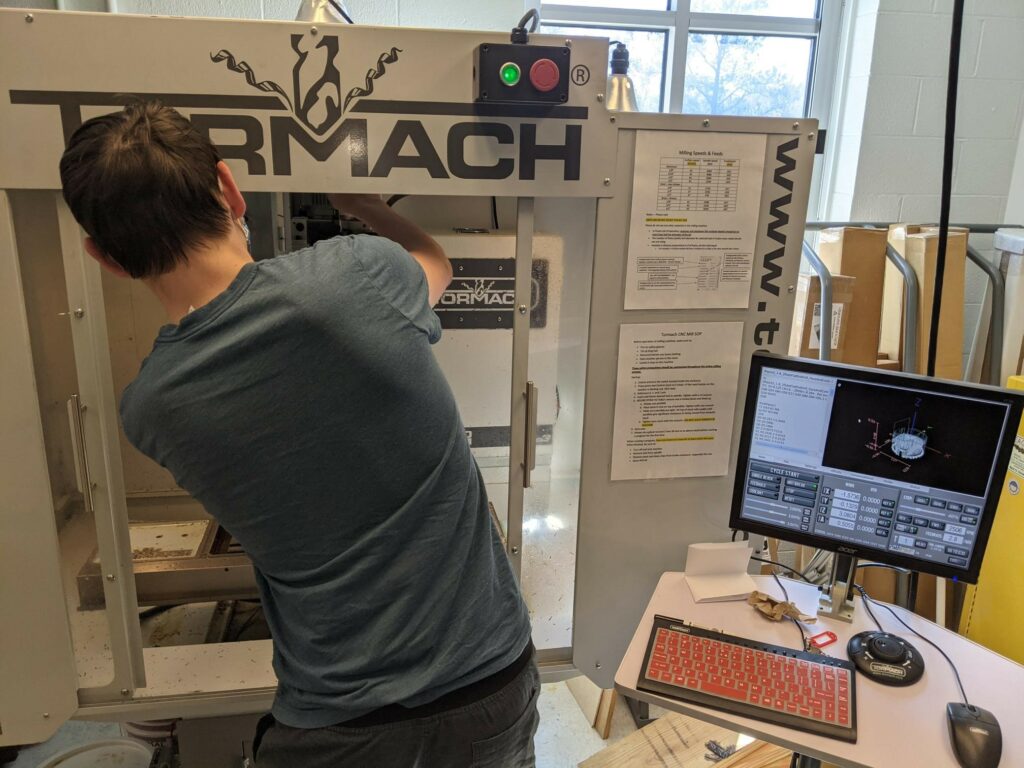
The Makerspaces at William & Mary have many projects underway, one of the more interesting is the creation of an open source syringe bot design that is ultra-low cost and high resolution. The concept is that there are so many instances when we need a simple robot to move around a syringe and squirt some goop for us; either to 3D print from viscous fluids and epoxies or to perform automatic titration and chemistry a robot can be useful. If we can make one that is ultra-low cost, as in a couple hundred bucks at most, and yet can maintain micrometer level positioning accuracies and micro (or even nano) liter level dispensation volumes, that robot could be truly useful!
Introducing syringeBot v0.1.
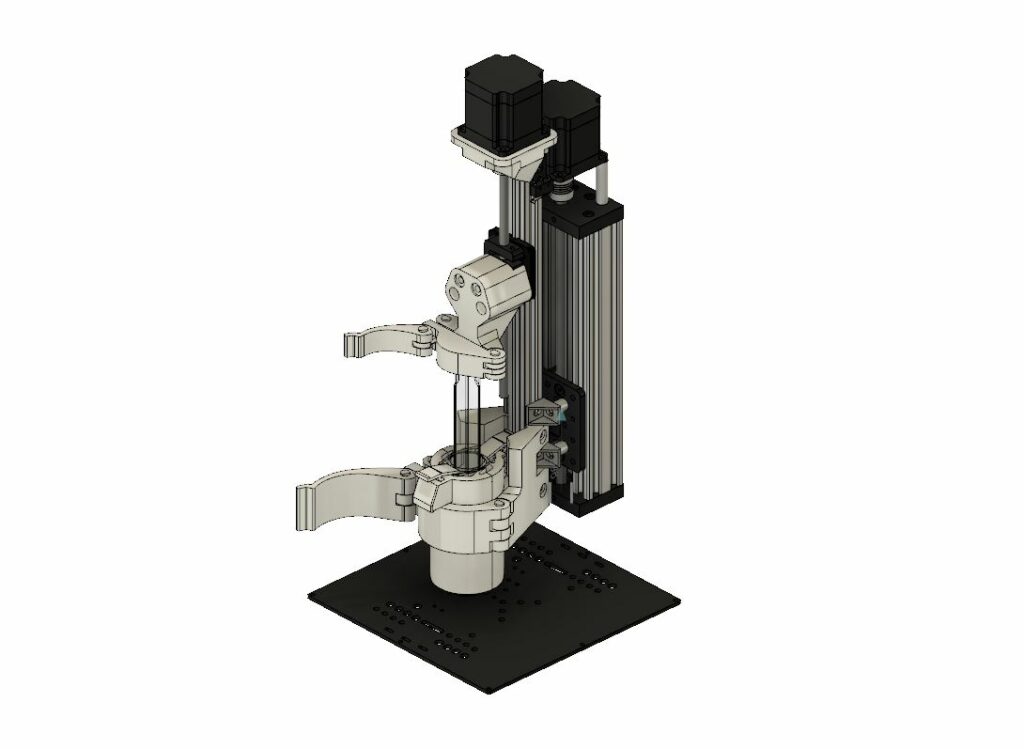
This is the basic head for the open source, 3D printable, syringe bot that we’ve completed, tested, and deployed. Here you can see it in action as used by Doctoral Candidate Stapel as it is being used to 3D print diatom-filled biogel structures:
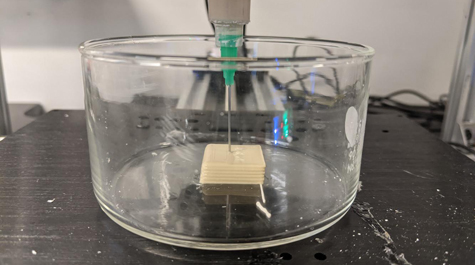
Stapel & Advisor Dr. Hannes Schniepp continue to move forward with their cutting edge research into the 3D printing of biological structures, having now built this new expanded bioreactor to generate custom materials.
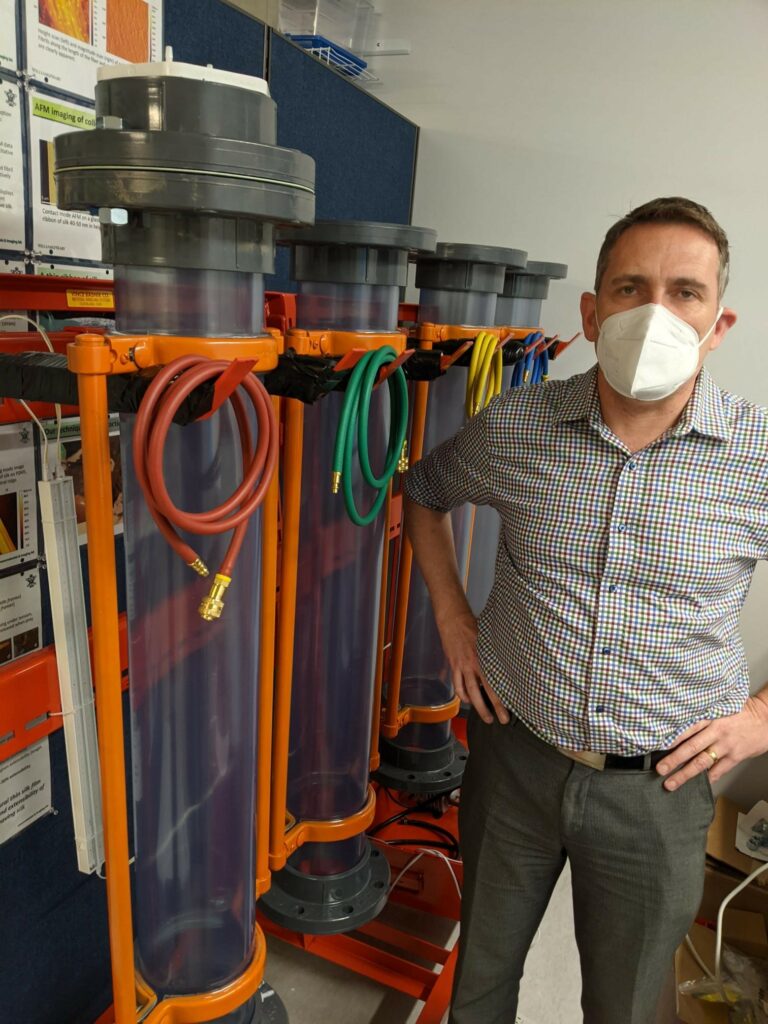
We will keep pushing forward with working on and improving ultra-low cost, high resolution, syringe bot design.
This version (0.1v) was designed and produced from scratch by Aidan Connor (Computer Science, ’21) and the Director of the Makerspaces. If you would like to become part of the open source design effort please contact the director at jfrey@wm.edu.